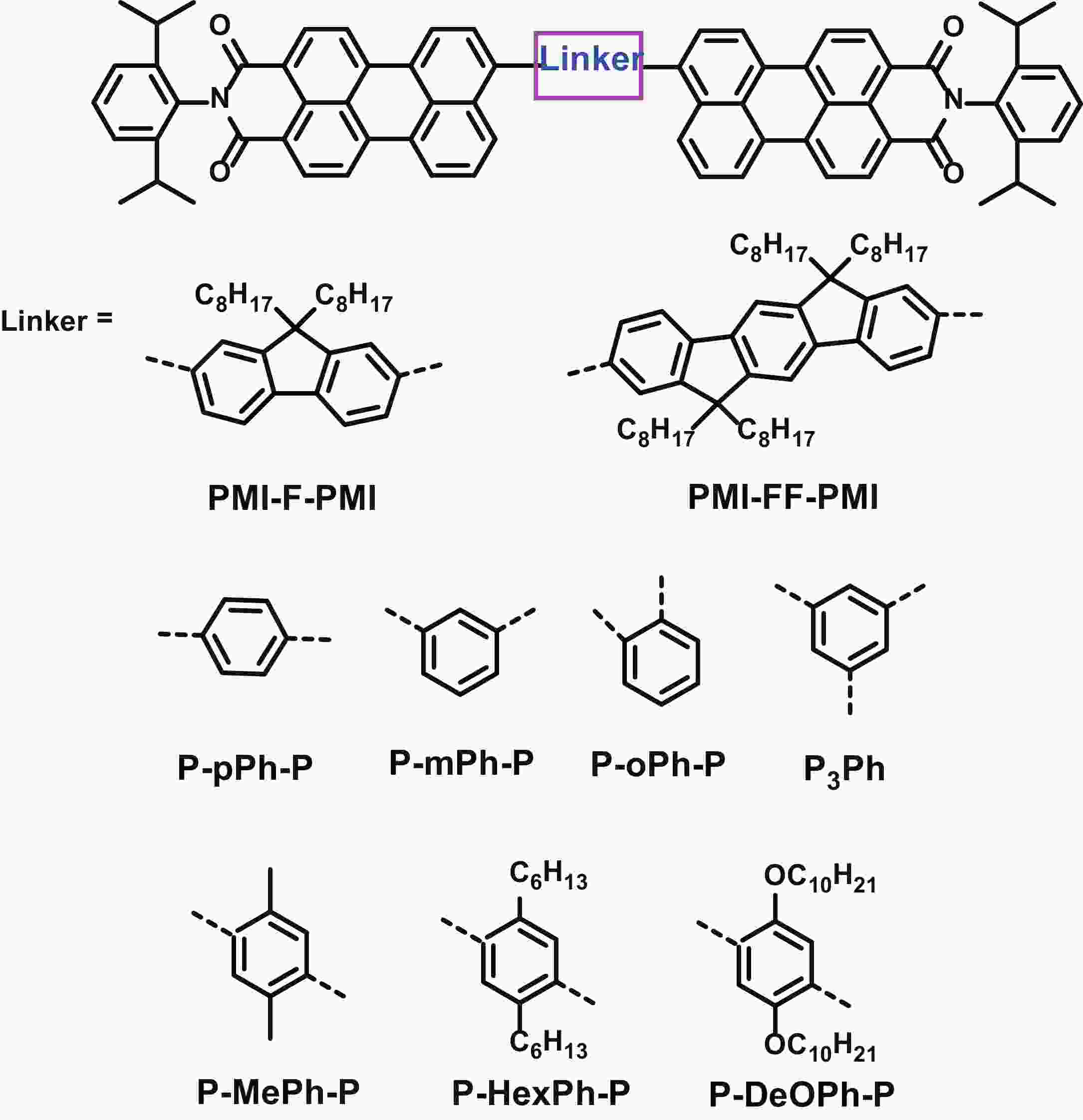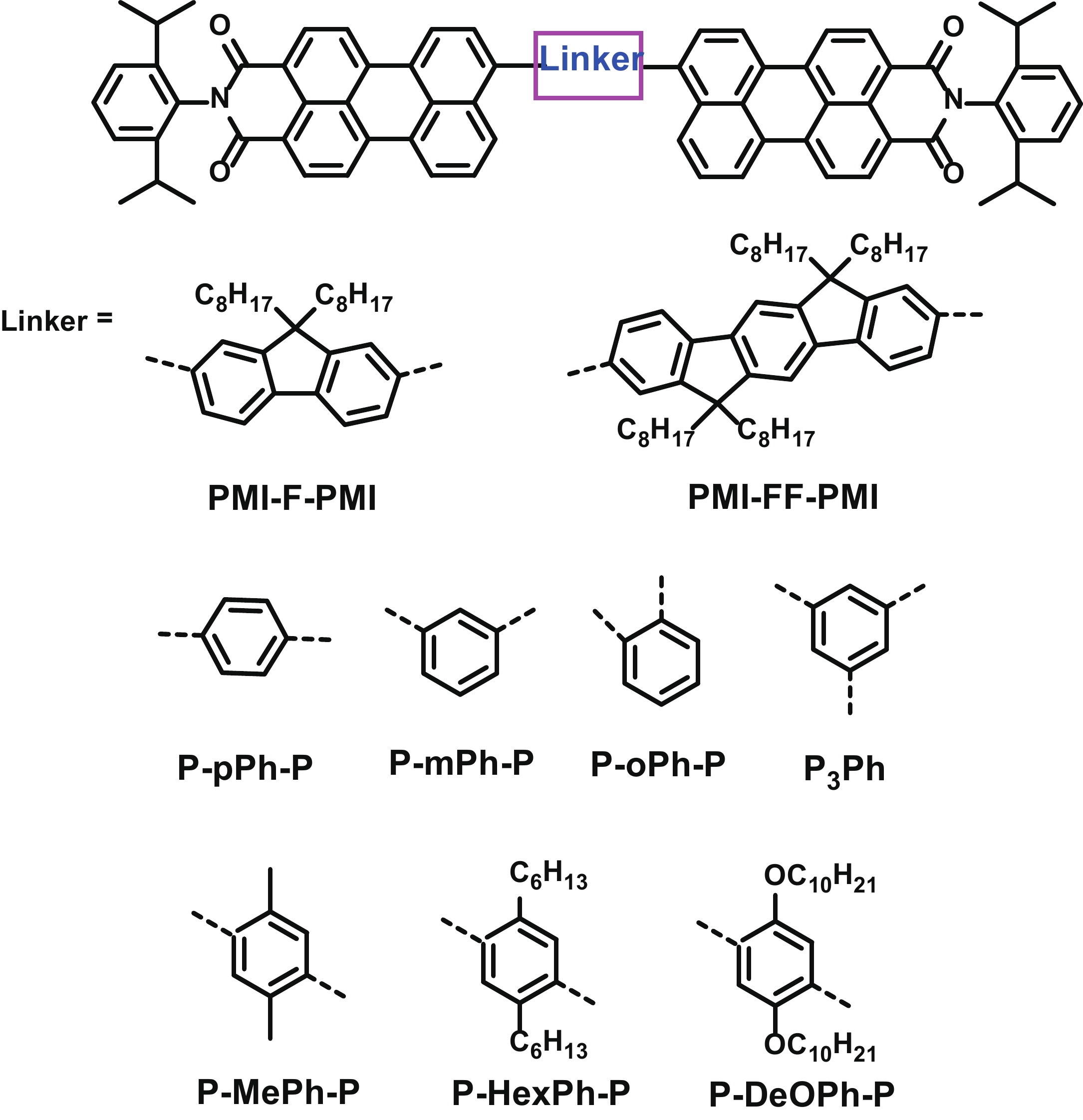| Citation: |
Yutong Ji, Helong Bai, Lixiu Zhang, Youdi Zhang, Liming Ding. Nonfullerene acceptors based on perylene monoimides[J]. Journal of Semiconductors, 2022, 43(5): 050203. doi: 10.1088/1674-4926/43/5/050203
Y T Ji, H L Bai, L X Zhang, Y D Zhang, L M Ding. Nonfullerene acceptors based on perylene monoimides[J]. J. Semicond, 2022, 43(5): 050203. doi: 10.1088/1674-4926/43/5/050203
Export: BibTex EndNote
|
Nonfullerene acceptors based on perylene monoimides
doi: 10.1088/1674-4926/43/5/050203
More Information-
References
[1] Li C, Zhou J, Song J, et al. Non-fullerene acceptors with branched side chains and improved molecular packing to exceed 18% efficiency in organic solar cells. Nat Energy, 2021, 6, 605 doi: 10.1038/s41560-021-00820-x[2] Liu W, Xu X, Yuan J, et al. Low-bandgap non-fullerene acceptors enabling high-performance organic solar cells. ACS Energy Lett, 2021, 6, 598 doi: 10.1021/acsenergylett.0c02384[3] Ye L, Ye W, Zhang S. Recent advances and prospects of asymmetric non-fullerene small molecule acceptors for polymer solar cells. J Semicond, 2021, 42, 101607 doi: 10.1088/1674-4926/42/10/101607[4] Li S, Li C Z, Shi M, et al. New phase for organic solar cell research: emergence of Y-series electron acceptors and their perspectives. ACS Energy Lett, 2020, 5, 1554 doi: 10.1021/acsenergylett.0c00537[5] Tang A, Xiao Z, Ding L, et al. ~1.2 V open-circuit voltage from organic solar cells. J Semicond, 2021, 42, 070202 doi: 10.1088/1674-4926/42/7/070202[6] Jin K, Xiao Z, Ding L, 18. 69% PCE from organic solar cells. J Semicond, 2021, 42, 060502 doi: 10.1088/1674-4926/42/6/060502[7] Sun H, Liu B, Ma Y, et al. Regioregular narrow-bandgap n-type polymers with high electron mobility enabling highly efficient all-polymer solar cells. Adv Mater, 2021, 33, 2102635 doi: 10.1002/adma.202102635[8] Zhang Y, Shi L, Chen Y. Overview and outlook of random copolymerization strategy for designing polymer solar cells. Acta Polym Sin, 2019, 50, 13 doi: 10.11777/j.issn1000-3304.2018.18193[9] Liu T, Ma R, Luo Z, et al. Concurrent improvement in JSC and VOC in high-efficiency ternary organic solar cells enabled by a red-absorbing small-molecule acceptor with a high LUMO level. Energy Environ Sci, 2020, 13, 2115 doi: 10.1039/D0EE00662A[10] Duan C, Ding L. The new era for organic solar cells: non-fullerene small molecular acceptors. Sci Bull, 2020, 65, 1231 doi: 10.1016/j.scib.2020.04.030[11] Jin K, Xiao Z, Ding L. D18, an eximious solar polymer. J Semicond, 2021, 42, 010502 doi: 10.1088/1674-4926/42/1/010502[12] Meng X, Jin K, Xiao Z, et al. Side chain engineering on D18 polymers yields 18.74% power conversion efficiency. J Semicond, 2021, 42, 100501 doi: 10.1088/1674-4926/42/10/100501[13] Qin J, Zhang L, Zuo C, et al. A chlorinated copolymer donor demonstrates a 18.13% power conversion efficiency. J Semicond, 2021, 42, 010501 doi: 10.1088/1674-4926/42/1/010501[14] Cao J, Yi L, Ding L. The origin and evolution of Y6 structure. J Semicond, 2022, 43, 030202 doi: 10.1088/1674-4926/43/3/030202[15] Xu Y, Cui Y, Yao H, et al. A new conjugated polymer that enables the integration of photovoltaic and light-emitting functions in one device. Adv Mater, 2021, 33, 2101090 doi: 10.1002/adma.202101090[16] Xu X, Yu L, Meng H, et al. Polymer solar cells with 18.74% efficiency: from bulk heterojunction to interdigitated bulk heterojunction. Adv Funct Mater, 2022, 32, 2108797 doi: 10.1002/adfm.202108797[17] Liu Q, Jiang Y, Jin K, et al. 18% Efficiency organic solar cells. Sci Bull, 2020, 65, 272 doi: 10.1016/j.scib.2020.01.001[18] Cui Y, Xu Y, Yao H, et al. Single-junction organic photovoltaic cell with 19% efficiency. Adv Mater, 2021, 33, 2102420 doi: 10.1002/adma.202102420[19] He Y, Chen H Y, Hou J, et al. Indene-C60 bisadduct: a new acceptor for high-performance polymer solar cells. J Am Chem Soc, 2010, 132, 1377 doi: 10.1021/ja908602j[20] He Y, Zhao G, Peng B, et al. High-yield synthesis and electrochemical and photovoltaic properties of indene-C70 bisadduct. Adv Funct Mater, 2010, 20, 3383 doi: 10.1002/adfm.201001122[21] Li C, Wonneberger H. Perylene imides for organic photovoltaics: yesterday, today, and tomorrow. Adv Mater, 2012, 24, 613 doi: 10.1002/adma.201104447[22] Tang C W. Two-layer organic photovoltaic cell. Appl Phys Lett, 1986, 48, 183 doi: 10.1063/1.96937[23] Rajaram S, Shivanna R, Kandappa S K, et al. Nonplanar perylene diimides as potential alternatives to fullerenes in organic solar cells. J Phys Chem Lett, 2012, 3, 2405 doi: 10.1021/jz301047d[24] Zhang Y, Xiao Y, Xie Y, et al. Fluorene-centered perylene monoimides as potential non-fullerene acceptor in organic solar cells. Org Electron, 2015, 21, 184 doi: 10.1016/j.orgel.2015.03.017[25] Zhang Y, Guo X, Guo B, et al. Nonfullerene polymer solar cells based on a perylene monoimide acceptor with a high open-circuit voltage of 1.3 V. Adv Funct Mater, 2017, 27, 1603892 doi: 10.1002/adfm.201603892[26] Hofinger J, Weber S, Mayr F, et al. Wide-bandgap organic solar cells with a novel perylene-based non-fullerene acceptor enabling open-circuit voltages beyond 1.4 V. J Mater Chem A, 2022, 10, 2888 doi: 10.1039/D1TA09752K[27] Xu J, Jo S B, Chen X, et al. The molecular ordering and double-channel carrier generation of nonfullerene photovoltaics within multi-length-scale morphology. Adv Mater, 2022, 34, 2108317 doi: 10.1002/adma.202108317[28] Schweda B, Reinfelds M, Hofinger J, et al. Phenylene-bridged perylene monoimides as acceptors for organic solar cells – a study on the structure-properties relationship. Chem Eur J, 2022, in press doi: 10.1002/chem.202200276 -
Proportional views






 DownLoad:
DownLoad:














